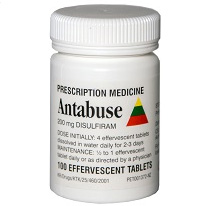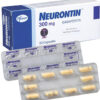Mechanism of Action
Neurontin, known generically as gabapentin, modulates excitatory neurotransmitter release. It binds to the alpha-2-delta subunit of voltage-gated calcium channels. This action results in the inhibition of excitatory neurotransmitter release, especially in hyperexcitable neurons. Unlike other anticonvulsants, Neurontin does not act on GABA receptors. Its mechanism is distinct compared to conventional antiepileptic drugs.
Pharmacokinetic Profile
Neurontin is absorbed in the small intestine via an L-amino acid transport system. Its bioavailability is dose-dependent, with decreased absorption at higher doses. The drug reaches peak plasma concentrations in approximately 2 to 3 hours post-ingestion. Neurontin does not bind significantly to plasma proteins. It is not metabolized in humans and is excreted unchanged by the kidneys. Its elimination half-life ranges from 5 to 7 hours.
Approved Indications
Neurontin is approved for the management of partial seizures with and without secondary generalization. It is also indicated for neuropathic pain management, specifically postherpetic neuralgia. Although not officially approved, it is frequently used off-label for a variety of neuropathic pain conditions. Its use must align with available evidence-based guidelines.
Administration Guidelines
Neurontin should be administered orally, with or without food. The dosage is usually increased gradually to minimize side effects. Patients should closely adhere to prescribed dosing schedules. Capsules should be swallowed whole, not crushed or chewed. Consistent timing of doses optimizes therapeutic levels. It is crucial to avoid sudden cessation without medical advice due to risk of withdrawal symptoms.
Determinants for Dosing
Dosing of Neurontin varies based on clinical condition and patient factors. Renal function significantly affects dosing, requiring adjustments in cases of renal impairment. Age, weight, and concomitant medications also influence dosing schedules. Maximum efficacy is often achieved with individualized titration. Regular monitoring of therapeutic outcomes and side effects is essential in dose determination.
Potential Drug Interactions
Neurontin has a low potential for interaction with other drugs. Antacids containing aluminum and magnesium may reduce gabapentin bioavailability by up to 20%. Co-administration with CNS depressants, such as opioids, may enhance sedation. Neurontin’s effect on other antiepileptics is negligible in regards to plasma concentrations. Patients should inform healthcare providers of all medications being taken, including over-the-counter drugs.
Storage Recommendations
Neurontin should be stored at room temperature, between 20°C and 25°C (68°F and 77°F). Protect from light and moisture to maintain efficacy. It should be kept in its original packaging until use. Keeping medication out of reach of children is paramount. Fluctuations in temperature and extremes should be avoided to preserve drug integrity.
Impact on Daily Living
Neurontin can influence sleep patterns, potentially causing drowsiness or dizziness. Patients are advised to assess individual reaction before engaging in activities requiring alertness, like driving. Weight gain and peripheral edema may occur; monitoring dietary intake and physical activity is recommended. Maintaining treatment adherence helps mitigate potential impacts on daily life and improves overall quality of life.
Metabolic Considerations
Neurontin has no significant effect on liver enzymes and does not undergo hepatic metabolism. This makes it a viable option for patients with hepatic impairments. Renal function remains the primary concern, as it directly affects drug clearance. Regular renal function assessment is beneficial, particularly in long-term therapy. Changes in renal function may necessitate dosage adjustments.
Adverse Effect Profile
Common adverse effects include dizziness, fatigue, and peripheral edema. Some patients report gastrointestinal disturbances, such as nausea and vomiting. Infrequent side effects may include mood changes and coordination problems. Tolerance to adverse effects often develops over time. Patients are encouraged to communicate persistent or bothersome reactions to their healthcare provider for management strategies.
Off-label Usage Scenarios
Neurontin is often utilized off-label for conditions such as fibromyalgia, hot flashes, and restless leg syndrome. It is occasionally used in migraine prophylaxis. Off-label usage should be supported by clinical judgment and patient-specific factors. Clinicians weigh literature evidence and individual response when considering off-label prescriptions.
Population-Specific Considerations
In elderly patients, cautious titration is necessary due to possible increased sensitivity and higher prevalence of renal insufficiency. Pediatric use is primarily restricted to seizure conditions. For breastfeeding mothers, minimal gabapentin transfer to breast milk makes it relatively safe. However, continuous assessment of benefits versus potential risks is prudent in all specific populations.
Titration and Discontinuation
Initial dosing starts low with gradual titration over several weeks. Increases should occur every 3-5 days to minimize adverse reactions. Discontinuation requires tapering to avoid withdrawal symptoms such as insomnia and anxiety. Abrupt cessation is contraindicated. Clinicians should guide cessation processes tailored to individual patient needs and response.








Reviews
There are no reviews yet.